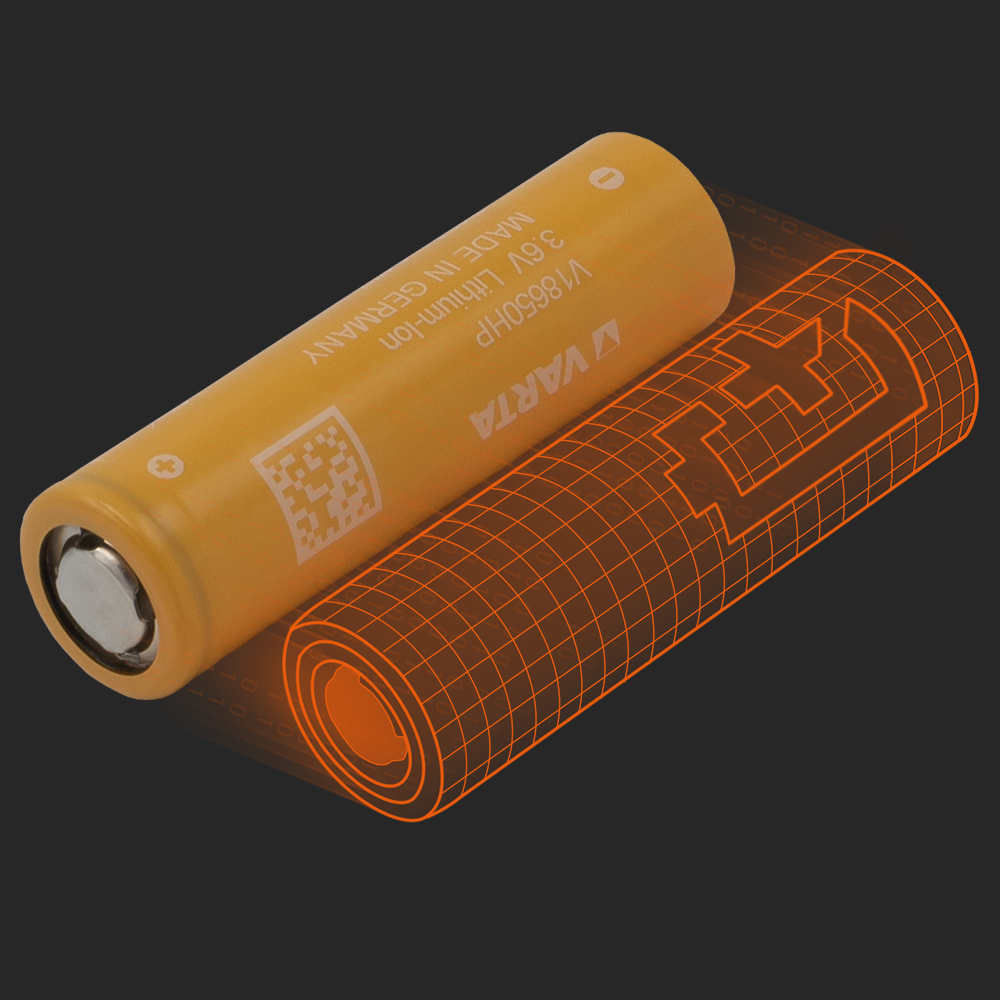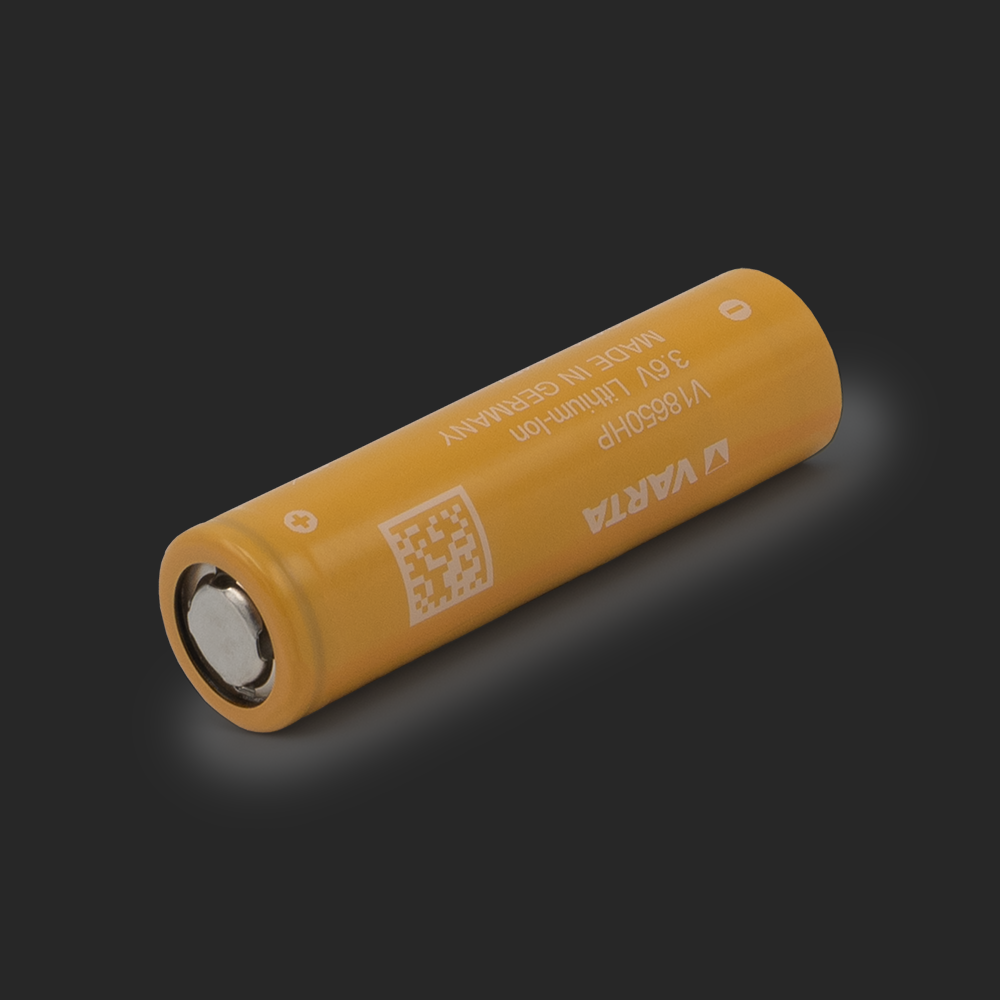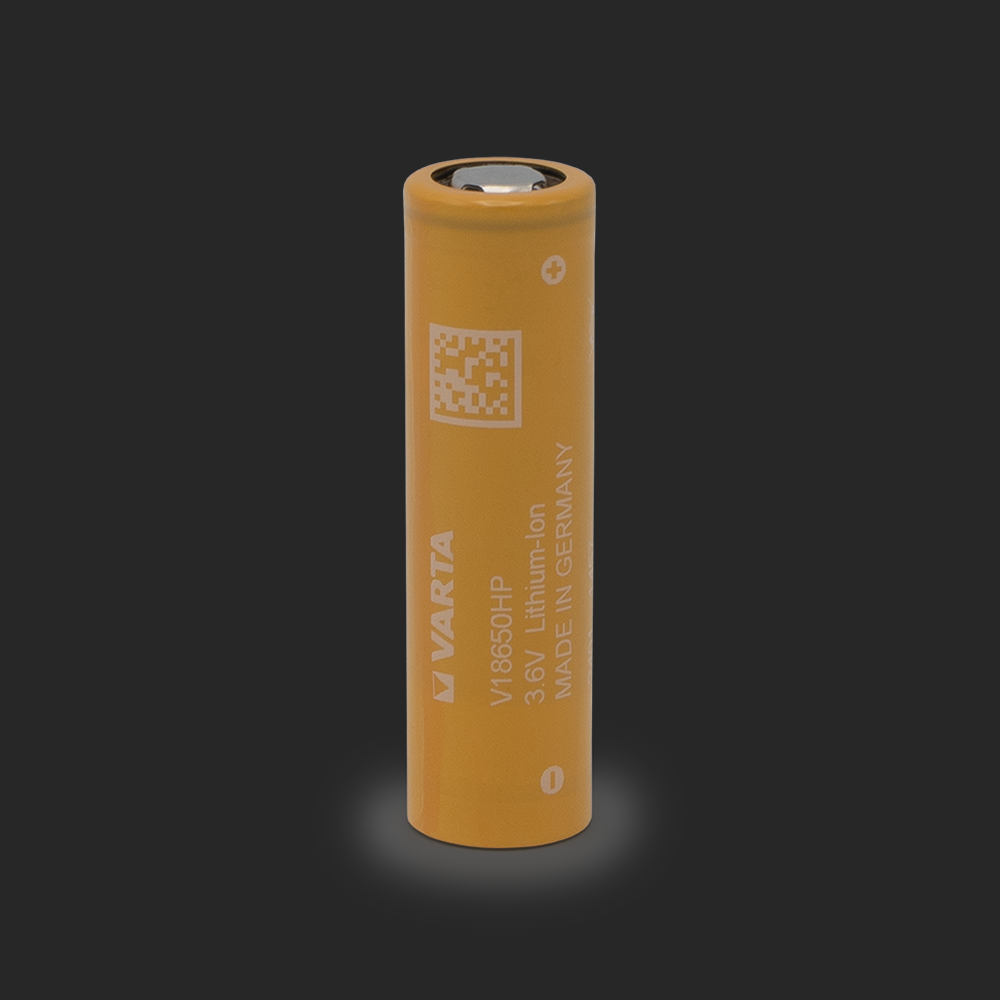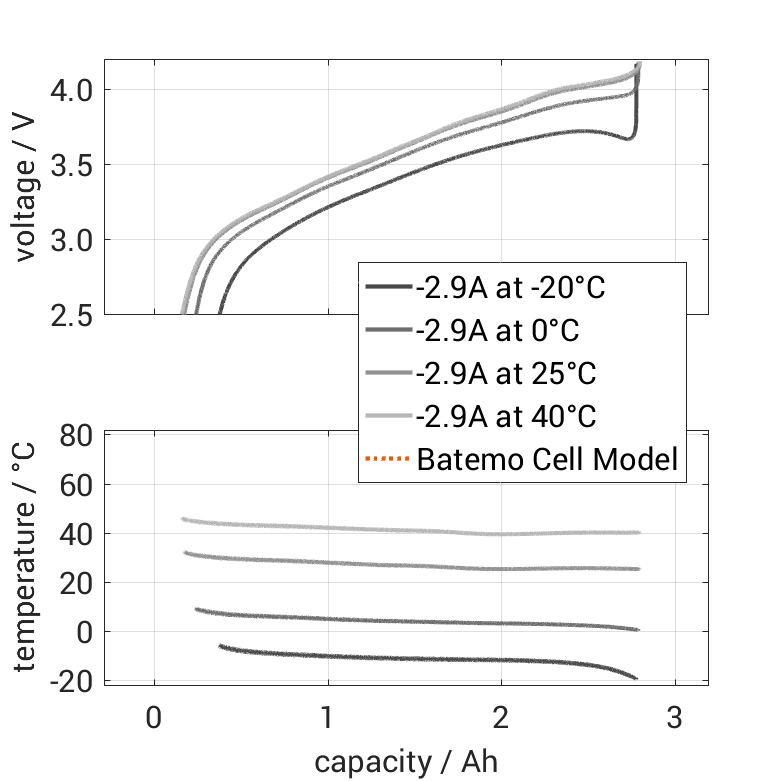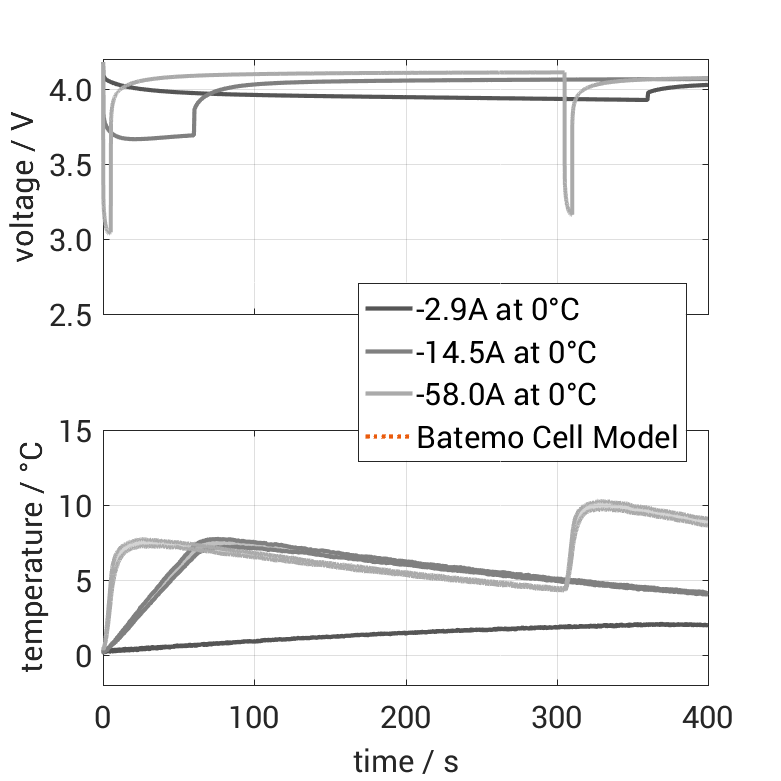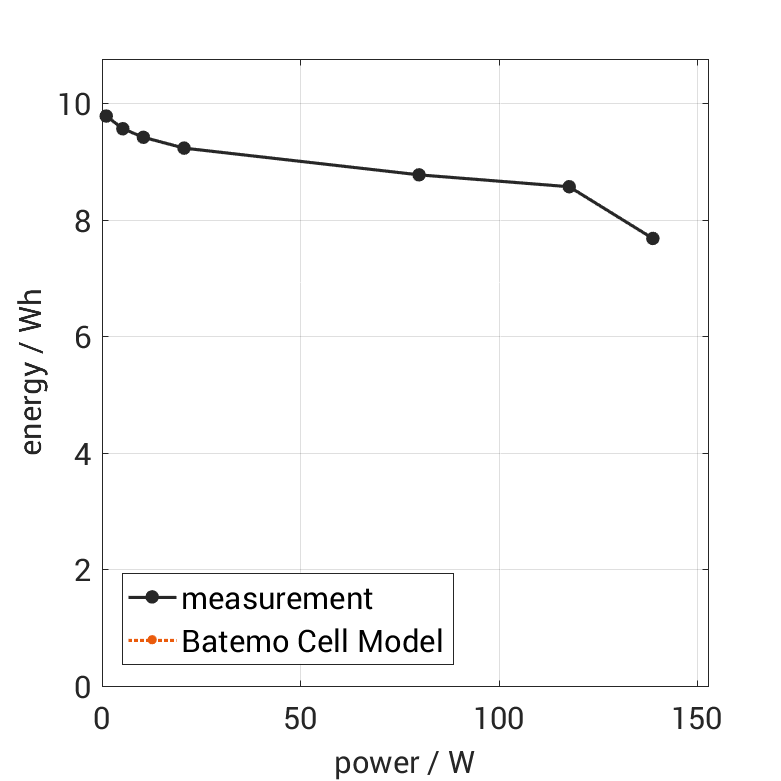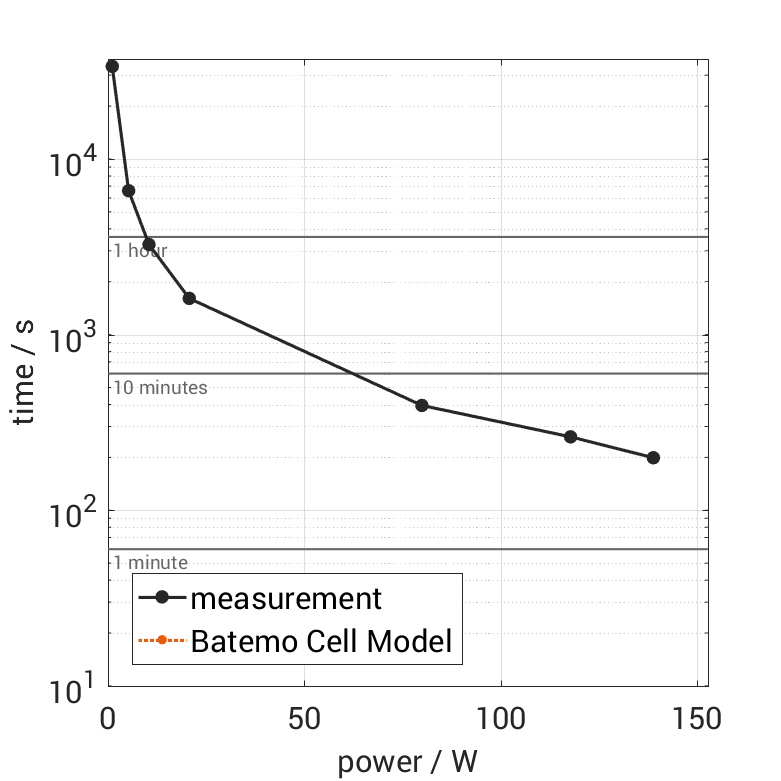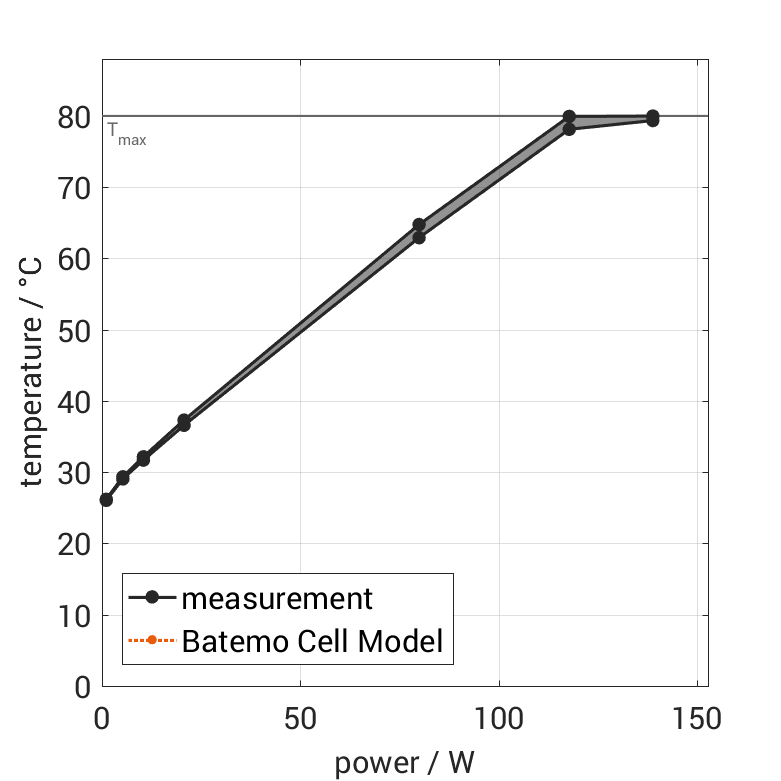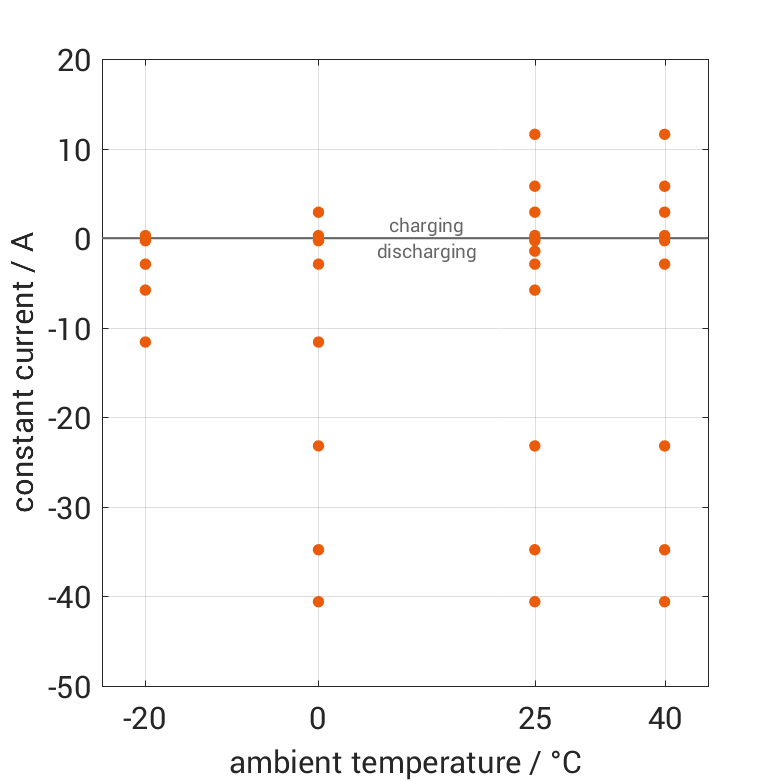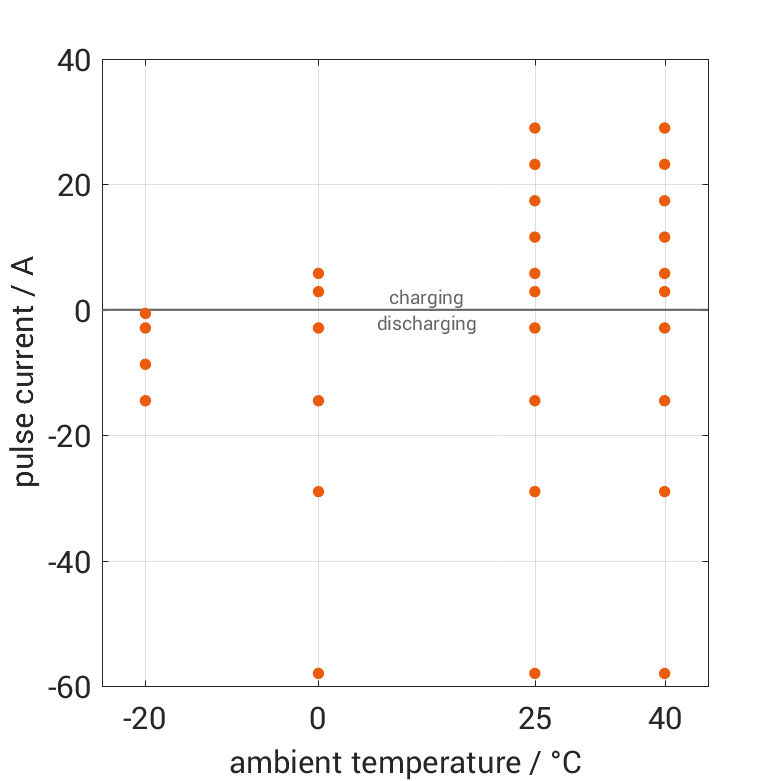V4Drive V18650HP-30(A)
Erhalten Sie alles, was Sie für die Lithium-Ion Batterizelle V4Drive V18650HP-30(A) benötigen: Umfangreiche Messdaten im gesamten Betriebsbereich und ein hochpräzises Batteriemodell mit globaler Validität.
| Zellherkunft | auf dem freien Markt gekauft |
| Zellformat | 18650 |
| Abmessungen | 18,4 x 65,2 mm |
| Gewicht | 47,4 g |
| Kapazität definitionschließen
Die Nennkapazität stammt aus dem Datenblatt des Herstellers, sofern verfügbar. Wenn das Datenblatt nicht verfügbar ist, wird die Nennkapazität geschätzt. Batemo hat die C/10-Kapazität gemessen, indem die Zelle bei einer Umgebungstemperatur von 25°C von 100% mit einem Konstantstrom von 0,29A (0,1C) bis zum Erreichen der Spannung von 2,5V entladen wurde. Die thermische Randbedingung ist freie Konvektion. |
nominal 2,90 Ah C/10 2,71 Ah |
| Strom definitionschließen
Alle Größen sind Messergebnisse aus dem Batemo-Batterielabor. Der kontinuierliche Strom ist der höchste Strom, der die Zelle vollständig entlädt, ohne sie zu überhitzen. Dazu wird die Zelle von 100% Ladezustand (SOC) bei einer Umgebungstemperatur von 25°C mit konstantem Strom bis zu einem Rest-Ladezustand von 10% und entweder der unteren Spannungsgrenze von 2,5V oder 90% der maximalen Oberflächentemperatur (72°C) entladen. Der Spitzenstrom ist der Strom, den die Zelle 5 Minuten lang liefern kann. Dazu wird die Zelle von 100% SOC bei einer Umgebungstemperatur von 25°C mit konstantem Strom entladen, bis sie entweder die untere Spannungsgrenze von 2,5V oder die maximale Oberflächentemperatur von 80°C nach 5 Minuten erreicht. Für Zellen, die die maximale Oberflächentemperatur erreichen, wird der gemessene Strom direkt als Spitzenstrom übernommen. Für Zellen, die nach 5 Minuten nicht die maximale Oberflächentemperatur erreichen, weil sie zuerst die untere Spannungsgrenze erreichen, wird der gemessene Strom mit einem Korrekturfaktor multipliziert, der den Strom abschätzt, der die Zelle innerhalb von 5 Minuten auf die maximale Oberflächentemperatur erhitzt hätte. Die thermische Randbedingung ist freie Konvektion. Diese Betriebsbedingungen können außerhalb der Spezifikation des Zellherstellers liegen. |
kontinuierlich 28,7 A Spitze 34,0 A |
| Energie definitionschließen
Batemo hat die C/10-Energie gemessen, indem die Zelle bei einer Umgebungstemperatur von 25°C von 100% mit einem konstanten Strom von 0,29A (0,1C) bis zum Erreichen der Spannung von 2,5V entladen wurde. Die thermische Randbedingung ist freie Konvektion. |
C/10 9,78 Wh |
| Leistung definitionschließen
Alle Angaben sind Messergebnisse aus dem Batemo-Batterielabor. Die kontinuierliche Leistung ist die höchste Leistung, die die Zelle vollständig entlädt, ohne sie zu überhitzen. Daher wird die Zelle von 100% Ladezustand (SOC) bei einer Umgebungstemperatur von 25°C mit konstantem Strom bis zu einem Rest-Ladezustand von 10% und entweder der unteren Spannungsgrenze von 2,5V oder 90% der maximalen Oberflächentemperatur ( 72°C) entladen. Die Spitzenleistung ist die Leistung, die die Zelle 5 Minuten lang liefern kann. Daher wird die Zelle von 100% SOC bei einer Umgebungstemperatur von 25°C mit konstantem Strom entladen, bis sie entweder die untere Spannungsgrenze von 2,5V oder die maximale Oberflächentemperatur von 80°C nach 5 Minuten erreicht. Für Zellen, die die maximale Temperaturgrenze erreichen, wird die gemessene Leistung direkt als Spitzenleistung übernommen. Für Zellen, die nach 5 Minuten nicht die maximale Oberflächentemperatur erreichen, weil sie zuerst die untere Spannungsgrenze erreichen, wird die gemessene Leistung mit einem Korrekturfaktor multipliziert, der die Leistung abschätzt, die die Zelle innerhalb von 5 Minuten auf die maximale Oberflächentemperatur erhitzt hätte. Die thermische Randbedingung ist freie Konvektion. Diese Betriebsbedingungen können außerhalb der Spezifikation des Zellherstellers liegen. |
kontinuierlich 98,0 W Spitze 116 W |
| Energiedichte definitionschließen
Die Energiedichten ergeben sich aus der C/10-Energie, dem Zellgewicht und dem Zellvolumen. |
gravimetrisch 206 Wh/kg volumetrisch 565 Wh/l |
| Leistungsdichte definitionschließen
Die Leistungsdichten ergeben sich aus der Spitzenleistung, dem Zellgewicht und dem Zellvolumen. |
gravimetrisch 2,44 kW/kg volumetrisch 6,68 kW/l |
V4Drive V18650HP-30(A) Modell
Das Batemo Cell Model der Lithium-Ion Batteriezelle V4Drive V18650HP-30(A) ist ein hochpräzises, physikalisches Zellmodell mit globaler Validität. Als digitaler Zwilling integriert es sich nahtlos in Ihre Forschung, Entwicklung und Analytik, indem es Ihre Entscheidungen auf Simulationen stützt. Weitere Informationen zu den Funktionen und Fähigkeiten des Batemo Cell Models finden Sie unter Details. Batemo demonstriert die Genauigkeit und Validität des Batemo Cell Models durch den Vergleich von Batteriesimulation und Messdaten im unten angegebenen Bereich. Die Validierung ist umfangreich, die experimentelle Charakterisierung deckt den gesamten Betriebsbereich der Zelle ab: Bei niedrigen und hohen Temperaturen, bis zum maximalen Strom und im gesamten Ladezustandsbereich.
| Ladezustandsbereich | 0 … 100% |
| Strombereich definitionschließen Der Strombereich beschreibt die elektrischen Stromgrenzen, die im Batemo-Batterielabor verwendet werden. Bitte beachten Sie das Datenblatt V4Drive V18650HP-30(A) für die genaue Definition des sicheren Betriebsstrombereichs der Zelle. |
-58 A Entladung … 29 A Ladung (-20,0C … 10,0C) |
| Spannungsbereich definitionschließen Der Spannungsbereich beschreibt die elektrischen Spannungsgrenzen, die im Batemo-Batterielabor verwendet werden. Bitte beachten Sie das Datenblatt V4Drive V18650HP-30(A) für die genaue Definition des sicheren Betriebsspannungsbereichs der Zelle. |
2,5 … 4,2 V |
| Temperaturbereich definitionschließen Der Temperaturbereich beschreibt die thermischen Grenzen, die im Batemo-Batterielabor verwendet werden. Bitte beachten Sie das Datenblatt V4Drive V18650HP-30(A) für die genaue Definition des sicheren Betriebstemperaturbereichs der Zelle. |
-20 … 80 °C |
Die Validierung des Batemo Cell Models ist vollkommen transparent. Das Batemo Cell Data-Paket enthält die Rohdaten der Messungen und Simulationen. Für alle Experimente werden die Modellgenauigkeit hinsichtlich Spannung, Temperatur, Leistung und Energie berechnet. Dies ermöglicht eine unkomplizierte Bewertung und Analyse der Gültigkeit des Batemo Cell Models. Die Grafiken zeigen eine Auswahl charakteristischer Daten der Zelle V4Drive V18650HP-30(A) zur Bewertung der Zellperformance. Die Prädiktion des Batemo Cell Models wird in die Plots integriert, sobald das Batemo Cell Model abgeschlossen ist.
- Entladeverhalten: Das elektrische und thermische Entladeverhalten ist stark nichtlinear.
- Pulsverhalten: Die Form der verschiedenen Strompulse ändert sich stark.
- Energieverhalten: Die Grafik veranschaulicht, wie viel Energie die Zelle bei unterschiedlichen Leistungen liefern kann.
- Leistungsverhalten: Je mehr Leistung die Zelle liefert, desto kürzer kann sie diese Leistung liefern.
- Thermisches Verhalten: Je größer die thermischen Verluste sind, desto stärker erwärmt sich die Zelle, was zu einer höheren verbrauchten Leistung führt.
Experimentdefinitionen anzeigenschließen
Die Zelle wird von 100% SOC mit verschiedenen Konstantströmen bei unterschiedlichen Umgebungstemperaturen entladen. Die thermische Randbedingung ist freie Konvektion. Die Messung endet, wenn entweder die Spannung von 2,5V oder die Oberflächentemperatur von 80°C erreicht wird.
Die Zelle wird von 100% SOC mit Strompulsen entladen, gefolgt von lastfreien Phasen bei unterschiedlichen Umgebungstemperaturen. Die thermische Randbedingung ist freie Konvektion. Die Messung endet, wenn entweder die Spannung von 2,5V oder die Oberflächentemperatur von 80°C erreicht wird. Der Graph zeigt eine vergrößerte Ansicht der Messung, um einen der Pulse zu visualisieren.
Die Zelle wird von 100% SOC mit unterschiedlichen Konstantströmen bei 25°C entladen. Die thermische Randbedingung ist freie Konvektion. Die Messung endet, wenn entweder die Spannung von 2,5V oder die Oberflächentemperatur von 80°C erreicht wird. Der Graph zeigt die ausgetauschte Energie und die mittlere Batterieleistung während des Experiments.
Die Zelle wird von 100% SOC mit unterschiedlichen Konstantströmen bei 25°C entladen. Die thermische Randbedingung ist freie Konvektion. Die Messung endet, wenn entweder die Spannung von 2,5V oder die Oberflächentemperatur von 80°C erreicht wird. Der Graph zeigt die Versuchsdauer und die mittlere Batterieleistung während des Experiments.
Die Zelle wird von 100% SOC mit unterschiedlichen Konstantströmen bei 25°C entladen. Die thermische Randbedingung ist freie Konvektion. Die Messung endet, wenn entweder die Spannung von 2,5V oder die Oberflächentemperatur von 80°C erreicht wird. Der Graph zeigt die Oberflächentemperatur der Zelle am Versuchsende und die mittlere Batterieleistung während des Experiments.
Die mittleren Genauigkeiten und unterstützten Simulationumgebungen werden veröffentlicht, sobald das Batemo Cell Model fertiggestellt ist.
V4Drive V18650HP-30(A) Daten
Batemo bietet eine umfassende, experimentelle Charakterisierung der Lithium-Ion Batteriezelle V4Drive V18650HP-30(A). Die Daten enthalten Messergebnisse im gesamten Betriebsbereich der Zelle. Die unten stehenden Beschreibungen und Grafiken erläutern die verfügbaren Messungen. Der Batemo Cell Viewer ermöglicht eine einfache und schnelle Analyse, Bewertung und Vergleich der Daten. Weitere Informationen finden Sie unter Details.
Konstantströme
Die Zelle wird bei unterschiedlichen Umgebungstemperaturen mit unterschiedlichen Konstantströmen von 100% SOC entladen oder von 0% SOC geladen. Die thermische Randbedingung ist freie Konvektion. Die Messung stoppt, wenn entweder die Spannung von 2,5V oder 4,2V oder die Oberflächentemperatur von 80°C erreicht wird. Das Diagramm zeigt, bei welchen Umgebungstemperaturen und Konstantströmen Messungen verfügbar sind.
Pulsströme
Die Zelle wird bei unterschiedlichen Umgebungstemperaturen mit Strompulsen, gefolgt von Lastphasen, von 100% SOC entladen oder von 0% SOC geladen. Die thermische Randbedingung ist freie Konvektion. Die Messung stoppt, wenn entweder die Spannung von 2,5V oder 4,2V oder die Oberflächentemperatur von 80°C erreicht wird. Das Diagramm zeigt, bei welchen Umgebungstemperaturen und Pulsen Messungen verfügbar sind.
Leistungsprofile
| Temperatur | Verfügbare Profile |
|---|---|
| -20 °C |  |
| 0 °C |  |
| 25 °C |  |
| 40 °C |  |
Die Zelle liefert ein typisches Leistungsprofil ausgehend von 100% SOC bei unterschiedlichen Umgebungstemperaturen. Die thermische Randbedingung ist freie Konvektion. Die Messung stoppt, wenn entweder die Spannung von 2,5V oder die Oberflächentemperatur von 80°C erreicht wird. Die Tabelle fasst zusammen, bei welchen Umgebungstemperaturen das Profil verfügbar ist.
V4Drive V18650HP-30(A) Report
Batemo bietet einen detaillierten Zerlege-Bericht der Lithium-Ion Batteriezelle V4Drive V18650HP-30(A). Der Bericht enthält alle wichtigen strukturellen Aspekte der Zelle. Diese Informationen sind wertvoll, um das physikalische Verhalten der Zelle zu verstehen und zu vergleichen. Der Report liefert eine fundierte Basis für Zelldesign- und Auslegungsentscheidungen Ihres Batteriesystems. Weitere Informationen finden Sie in den Details.
| Leistungsübersicht |  |
| Zelläußeres |  |
| Zellinneres |  |
| Sicherheitsmerkmale |  |
| Elektrodenmikrostruktur und -material |  |

